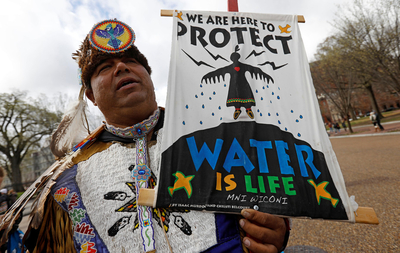On August 25th the nation celebrated the 100th anniversary of the National Park Service, a federal agency that manages National parks and related federal lands. Lands that were once owned, and still remain important, to Native peoples. The history of the removal of Native peoples for the creation of public lands is fraught with conflict and controversy.
In 1895 George Bird Grinnell, described as “one of the most significant advocates of the national park idea,” divided his time between two areas – the Rocky Mountains on the continental divide and the Little Rockies in central Montana. His purpose was not to preserve these lands as national parks, but instead, to exploit these lands for their potential natural resources, especially gold, exemplifying Montana’s motto “Oro y Plata,” Gold and Silver. Reluctantly both the Blackfeet and the Gros Ventre/Assiniboine peoples signed Grinnell’s agreements, or “coercions” as elders call them today, relinquishing land deemed sacred.
Before the ink was dry miners poured into these two areas of Montana in search of riches. After fifteen years in the Rockies, miners found little, and in 1910 Grinnell returned to help create Glacier National Park. Now touted as a “pristine” “spectacular” “paradise.” However, the Little Rockies did not have the same happy ending. Why? Because they found gold.
Over the course of a century the Little Rockies suffered under a never ending onslaught of resource extraction. The nail in the coffin came in the 1970s when the Pegasus Gold [company] introduced new technology – cyanide heap leach mining – where a toxic brew with poisonous cyanide is mixed with low grade ore to extract its gold. Within a short time the mountains, streams, and Native people downstream became contaminated with a wide range of toxins. In the 1990s the Native environmental justice group Red Thunder fought to end the use of cyanide leach mining. Against overwhelming odds, and using the EPA’s Clean Water Act, they won. Cyanide leach mining is now banned in the state of Montana and elsewhere. Unfortunately, the environmental pollution and related health issues remain on the Ft. Belknap reservation and their sacred Little Rockies.
Our purpose here is not to retell yet another sad story of Native lands polluted. But to suggest that there could have been and can be a different story. What if Grinnell championed both the Rockies and Little Rockies as sites for National park status? What if we saw value in both places, beyond resource extraction?
The GOP recently introduced in their platform a call to open public lands for further resource extraction. However, national parks have proven to provide a far better long term economic solution. In 2015 tourism brought almost $4 billion to Montana, visitors who mostly come to see Yellowstone or Glacier National Park. But, unfortunately, not the Little Rockies.
We are not “extreme environmentalists” (as the GOP platform states) but Native people who care about the land where our ancestors bones are buried, where our sacred places remain, where our religious ceremonies are performed, and where our children and grandchildren will call their holy land, too.
As the 100th anniversary year of the National Park Service is celebrated, we suggest that we rethink the potential of public lands, both the “pristine” and the degraded as places of worth. As Native people we value them both, because these places are our home.
1. Quote about Grinnell from the www.pbs.org/nationalparks/people/behindtheparks/2/
2. Quote about “coercion” from Gros Ventre elder Joe Azure, resident of Havre, Montana.
3. Quotes about Glacier National Park from www.nps.gov/glac/index
4. Quote about $4 billion in the Missoulian, David Erikson, Jan. 28. 2015
5. Quote about “extreme environmentalist” in the GOP 2016 platform.




